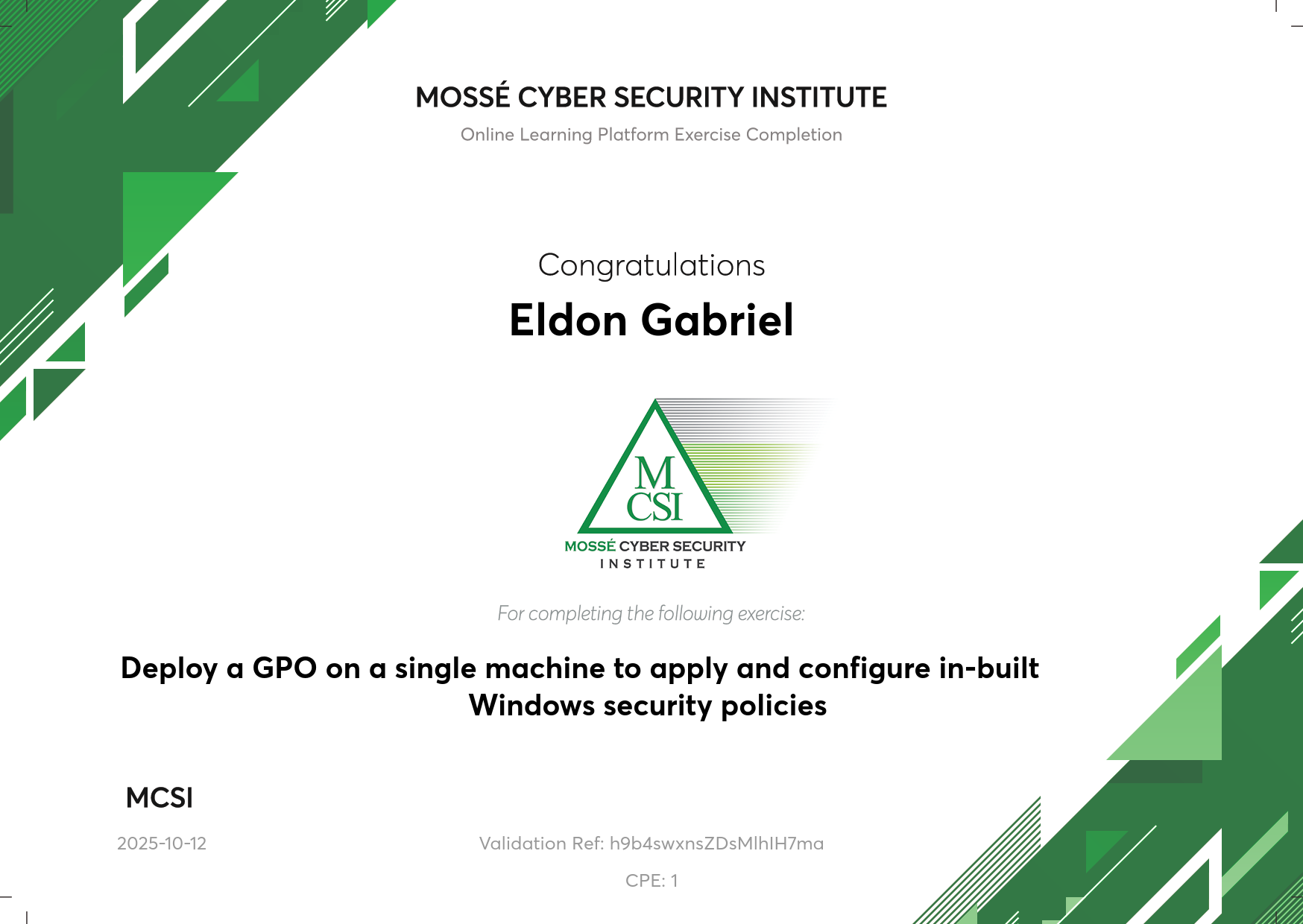Exercise Core Function
In this exercise, I focused on enhancing the security of a standalone Windows workstation by applying a Local Group Policy Object (GPO). The goal was to reinforce system integrity, access control, and protocol hardening in a controlled environment.
What I Studied
The lab involved navigating the Local Group Policy Editor to configure policies that strengthen endpoint security.
Key tools and techniques applied:
- Using gpedit.msc to locate and apply policy settings
- Exploring Administrative Templates and Security Settings paths
- Verifying policy application and persistence on a standalone workstation
What I Learned
Key observations and lessons from this exercise:
- Hands-on configuration builds foundational skills in system hardening
- Validating policy changes ensures intended security outcomes
- Understanding GPO precedence is critical for consistent policy enforcement
Why It Matters
Applying local GPOs is important for enterprise security and compliance:
- Reduces exposure to unauthorized access and misconfigurations
- Supports baseline system hardening before deployment in larger environments
- Enhances operational security understanding for both isolated and domain-connected systems
How It Maps to the Job/Framework
- NICE (Cyber Defense Analyst / IT Operations Technician): Reinforces endpoint hardening, policy validation, and system access management
- ASD Cyber Skills Framework – Advanced Beginner: Highlights practical application of policy enforcement and baseline security controls
Key Takeaways
- Local GPOs provide direct control over system security posture
- Validating and documenting applied settings ensures consistency
- Baseline policy enforcement reduces the risk of exploits and misconfigurations
- Skills learned are directly transferable to professional enterprise security roles
See my report below for a complete technical summary and validation of this lab exercise:
Certificate Earned
I successfully completed the exercise titled “Deploy Local Group Policy on a Single Machine to Strengthen Windows Security”. This certificate demonstrates practical proficiency in applying endpoint security policies, validating configurations, and reinforcing system hardening practices.



